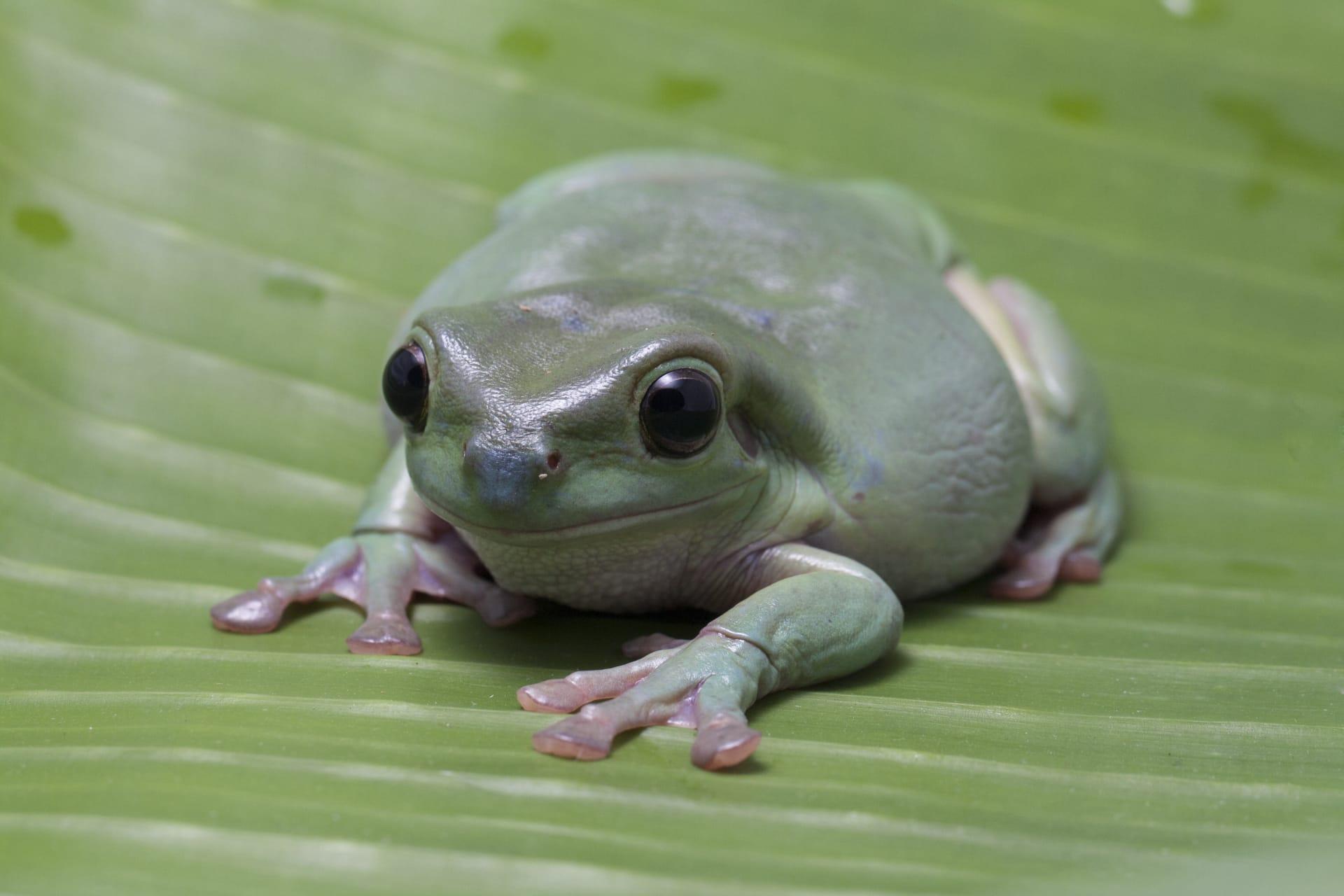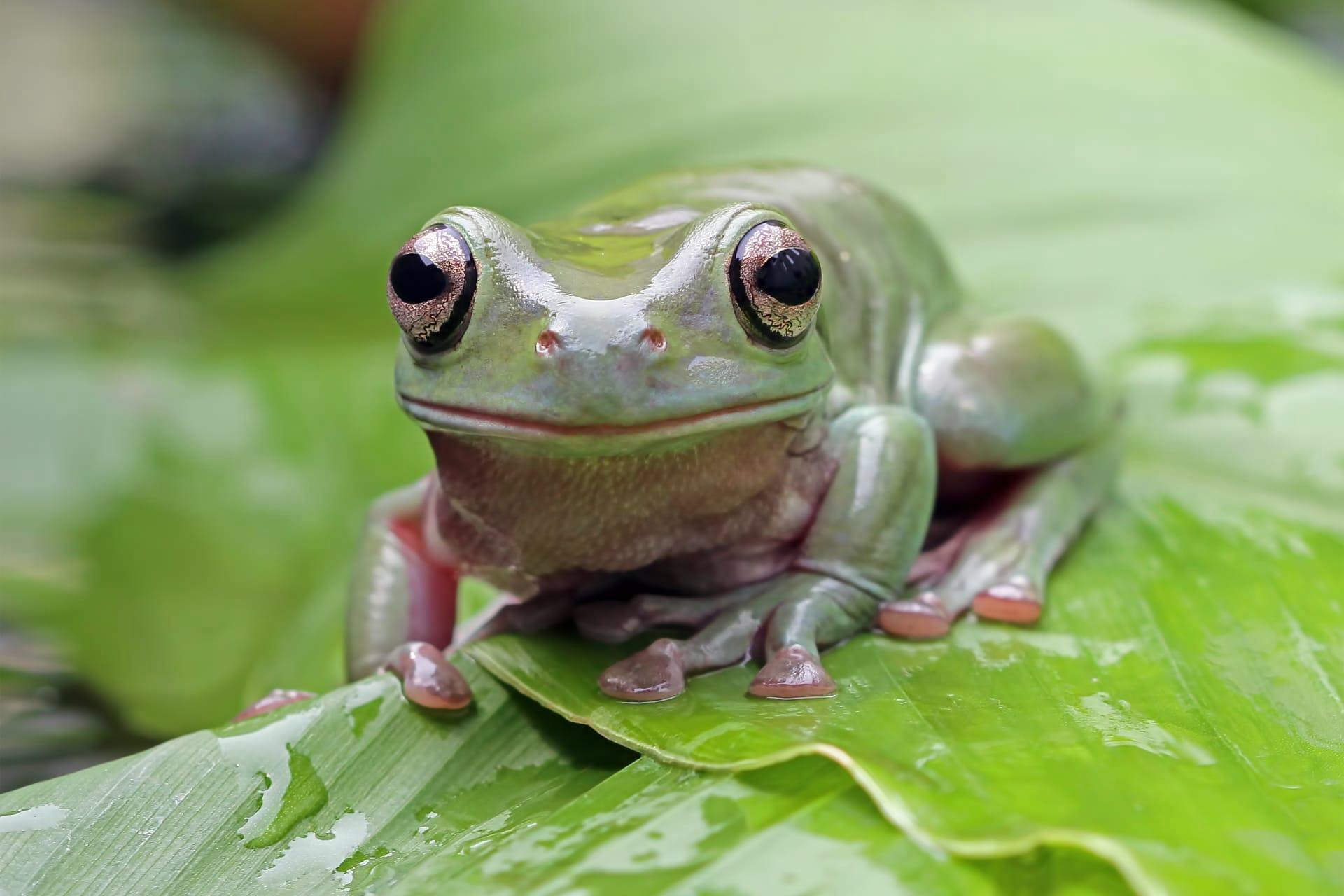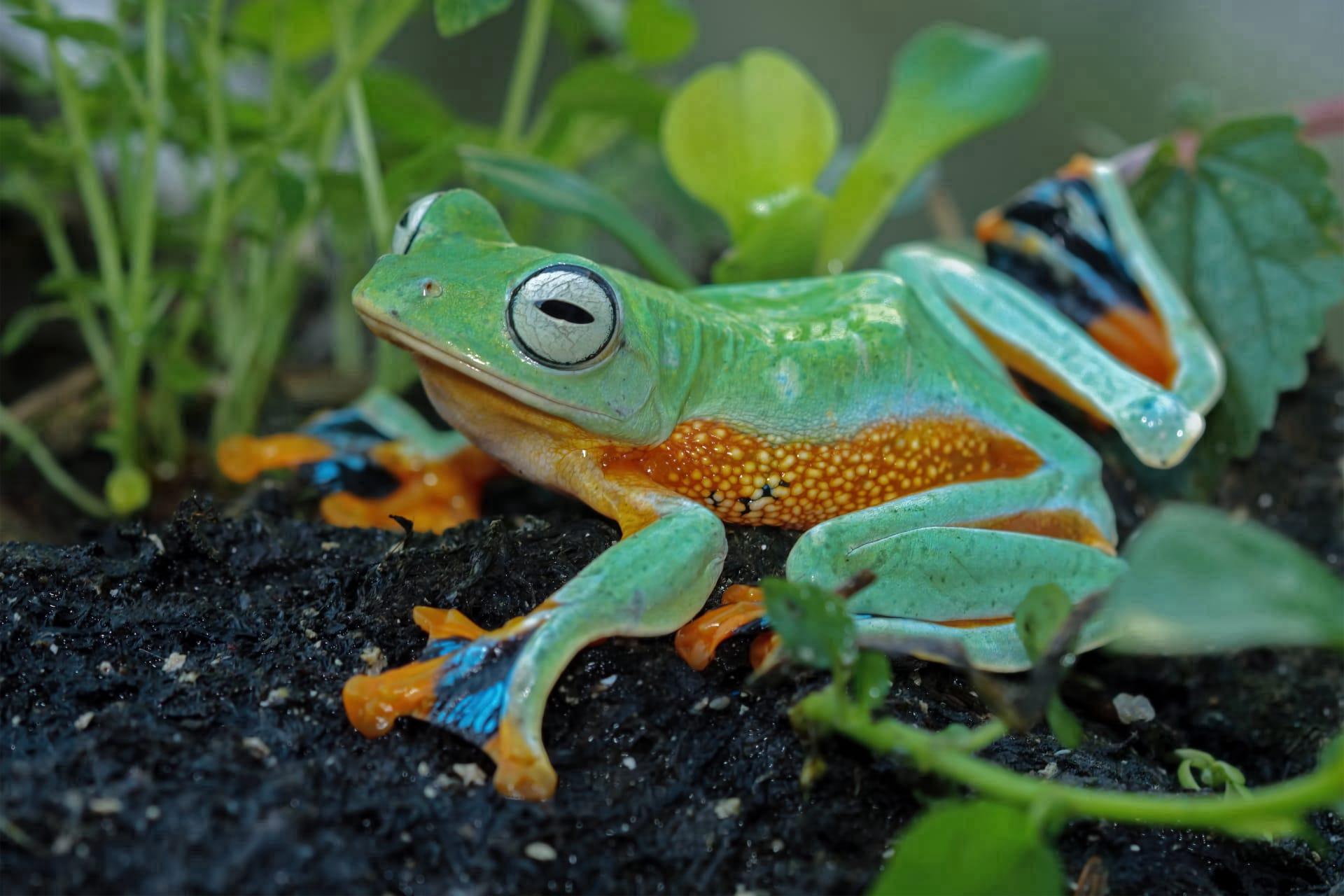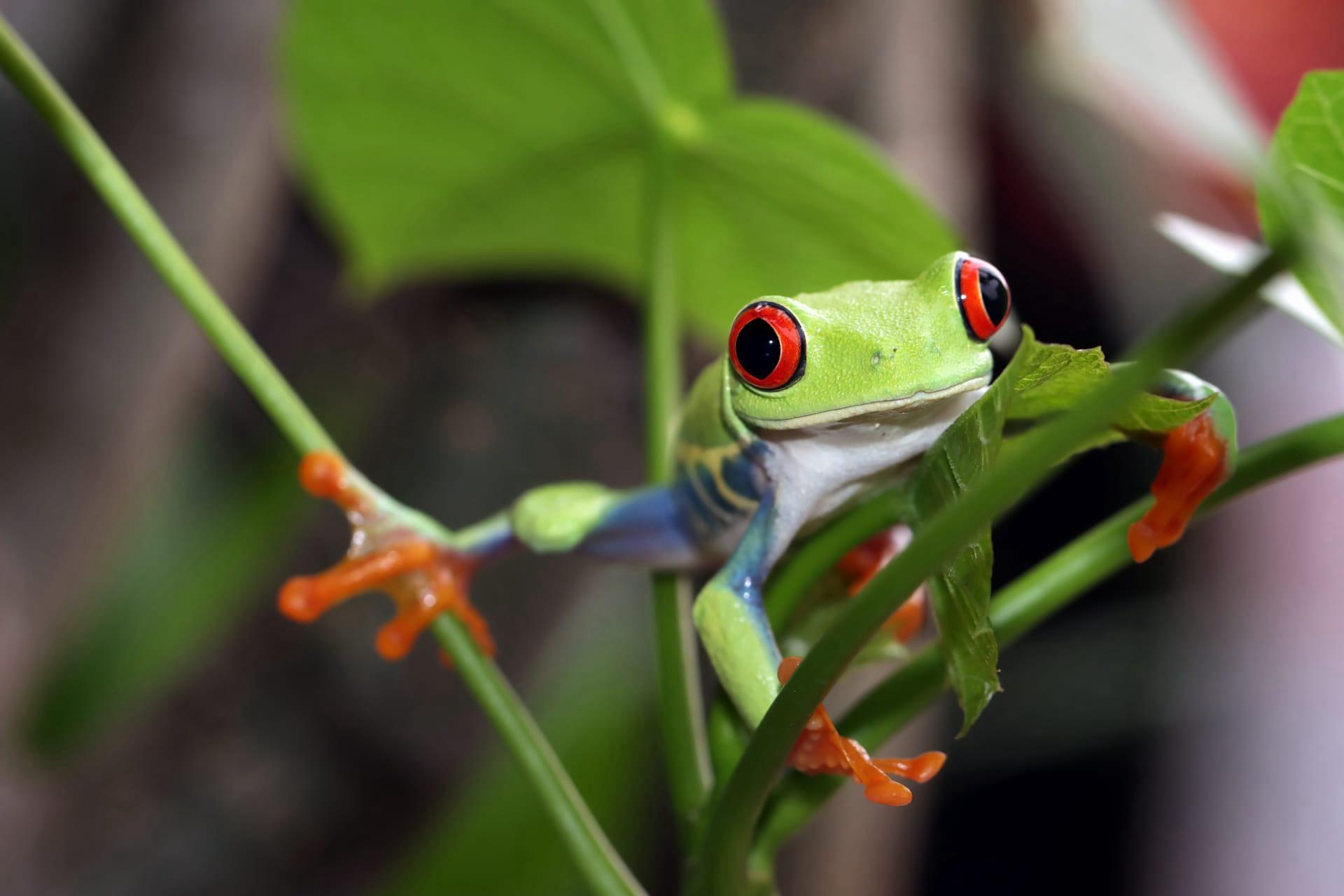Tree Frog Trivia
- Home /
- Trivia Question /
- Animal /
- Tree Frog Trivia
1
Question: How long can tree frogs live in the wild, and does this lifespan change in captivity?
Answer: In the wild, tree frogs generally live for about 5 to 9 years. However, when they are cared for in captivity, their lifespan can extend up to 15 years. Factors like diet, environmental stress, and predation significantly influence their longevity in the wild. In contrast, captive frogs benefit from consistent food supply, lack of predators, and controlled environments, aiding their longer lifespan.
Question: What enables tree frogs to stick to wet and slippery surfaces?
Answer: Tree frogs have specialized toe pads that allow them to cling to wet and slippery surfaces. These toe pads contain microscopic hexagonal patterns and a mucous-like secretion, which create a surface tension and adhesive force. This adhesion is so effective that a tree frog can support its entire weight with just one toe. Additionally, their toe pads can change shape to increase contact with uneven surfaces.

2
Question: Do tree frogs change color, and if so, why?
Answer: Yes, tree frogs can change color. This ability, known as metachrosis, helps them adapt to different environments and temperatures. Color changes are influenced by factors like humidity, light, and temperature. For example, a tree frog may turn darker in cooler environments to absorb more heat and lighter in warm environments to reflect light.
Question: Is it true that all tree frogs are green?
Answer: No, not all tree frogs are green. While green is a common color, tree frogs exhibit a variety of colors like brown, gray, yellow, and even blue. These colors can depend on species, habitat, and environmental factors. For instance, the Red-eyed Tree Frog is famous for its striking green body, blue streaks, and vibrant red eyes, showcasing the diversity in their appearance.

3
Question: How far can tree frogs jump, and what makes them such good jumpers?
Answer: Tree frogs are exceptional jumpers, capable of leaping distances up to 50 times their body length. For a frog measuring 2 inches (5 cm), that's a leap of about 8.2 feet (2.5 meters)! This impressive jumping ability is due to their powerful hind legs and elongated ankle bones. These adaptations provide the necessary leverage and force for their remarkable leaps.
Question: What do tree frogs eat, and how do they hunt?
Answer: Tree frogs are primarily insectivores, meaning they eat insects. Their diet typically includes flies, mosquitoes, moths, and crickets. They hunt primarily at night (nocturnally) using their excellent night vision. Tree frogs use a sit-and-wait strategy, staying motionless and then striking quickly with their sticky, extendable tongues to catch prey.

4
Question: Can tree frogs survive in cold climates, and how do they cope with winter?
Answer: Some tree frog species can survive in cold climates. They endure winter by entering a state called brumation, similar to hibernation. During brumation, their body processes slow down significantly, and they take refuge in leaf litter, under logs, or in tree hollows. Their bodies can even tolerate being partially frozen, thanks to special antifreeze-like compounds in their blood.
Question: Are tree frogs important to the ecosystem, and what role do they play?
Answer: Tree frogs play a vital role in ecosystems. As predators, they help control insect populations, including pests harmful to agriculture. As prey, they provide food for larger animals. Their presence indicates a healthy, balanced ecosystem, as they are sensitive to environmental changes, making them important bioindicators of ecological health.

5
Question: How do tree frogs reproduce, and what is unique about their reproductive habits?
Answer: Tree frogs reproduce through a process called amplexus, where the male clings to the female's back and fertilizes the eggs as she lays them. This typically occurs in water bodies like ponds or marshes. Some species exhibit unique reproductive habits, like laying eggs on leaves overhanging water, so the tadpoles drop into the water upon hatching.
Question: Do tree frogs vocalize, and what is the purpose of their sounds?
Answer: Tree frogs are known for their vocalizations, especially during mating season. Males produce calls ranging from croaks to chirps to attract females or establish territory. Each species has a distinct call. These sounds play a crucial role in communication and reproductive behavior. Interestingly, some species have evolved calls that can be heard over long distances or above ambient noise, like rushing water.